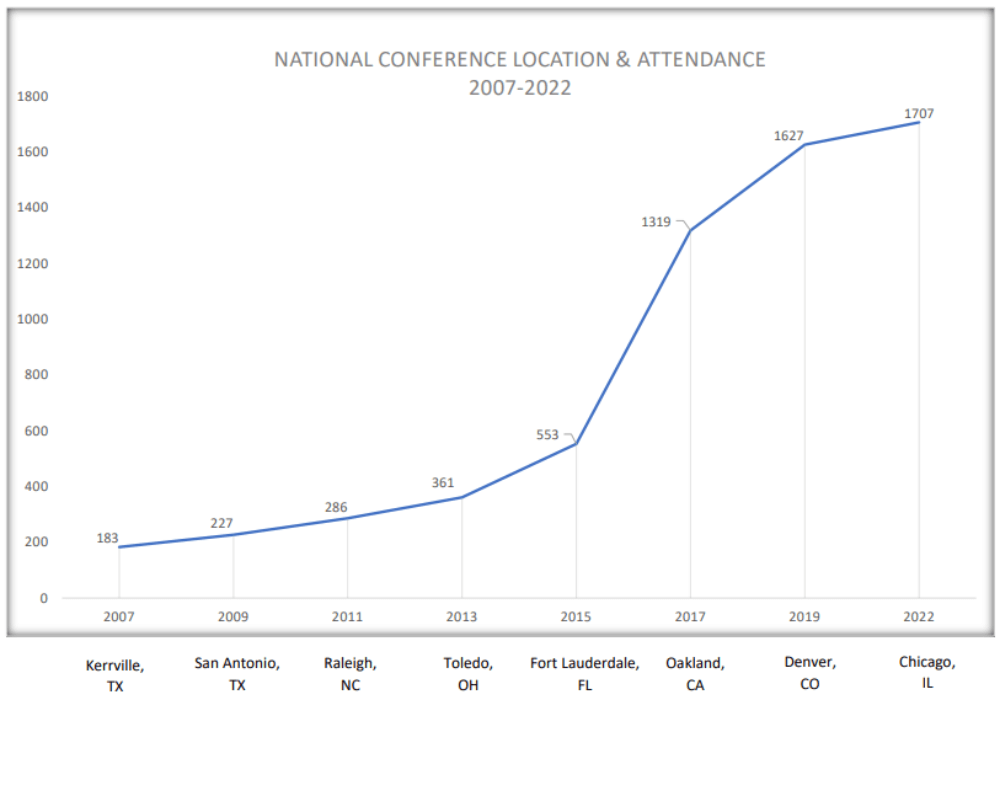MISSION & VISION
Vision Statement
We envision a safe and equitable world where restorative interactions
transform individuals, relationships, communities and systems through
the prevention, repair and deep healing of harm.
Mission Statement
We advance community and restorative justice as a social movement by serving people and organizations committed to building community and addressing harm. NACRJ provides guidance and support to establish high quality practices with fidelity to restorative principles.
NACRJ is committed to advancing Diversity, Equity, Inclusion, and Justice (DEIJ) values and identifying strategies for continuous improvement. Click here to read our Resolution Statement on DEIJ.

HISTORY
The roots of NACRJ date back to 2007 with the development of the first national (U.S.) conference on restorative justice. After the significant success of the inaugural conference, and two subsequent conferences in 2009 and 2011, it was determined that an entity be formed to serve as the parent organization of the rapidly growing conference. It was out of this need that NACRJ was legally incorporated as a 501(c) (3) non-profit in 2013. From 2007 to 2022, NACRJ has organized eight national conferences, the most recent being held in Chicago, IL in July 2022. With 1,707 registered attendees, this conference was the largest restorative justice convening in the international history of the restorative justice movement. In addition to its role as the organizer of the national conference, NACRJ has attracted a membership of over 600 people which makes it the largest restorative justice membership organization association in the United States.
Honoring NACRJ Founders and their Vision for a New Association
The original idea to form a new association came forward in 2011 during the 3rd National Conference on Restorative Justice in Raleigh, NC. Members of the National and Local Organizing Committees met over dinner to discuss how to provide a legal home and parent organization for the fast-growing conference. During that discussion, it was decided that a new national association would be formed rather than join with an existing association.
Dr. Michael J. Gilbert of the Department of Criminal Justice, University of Texas at San Antonio and Lead Organizer for the 2009 National Conference, was appointed as the Organizing Director and given the mission of creating a new national association. He recruited three other people to serve as the Organizing Board of Directors. They were:
- Dr. Fania Davis, Executive Director, Restorative Justice for Oakland Youth;
- Professor Joanne Katz, Department of Criminal Justice, Missouri Western State University; and
- Professor Jon Powell, Norman Adrian Wiggins School of Law, Campbell University.
Over the next two years they worked to form the National Association of Community and Restorative Justice (NACRJ). On November 2, 2012, NACRJ was incorporated in the State of Texas. On June 19, 2013, NACRJ was publicly presented to the attendees at the 4th National Conference on Restorative Justice in Toledo, OH.
Through the new association, NACRJ founders sought to provide a support system for reframing the concept of “justice”. They sought to make space for different perspectives on the meaning of justice, what it requires, and how it is attained. They recognized that the broader meaning of “justice” concerns how people live together peacefully, harmoniously despite their differences. In this sense, justice is relational and rooted in several fundamental principles - fairness, balance, decency, respect, and dignity between people within their communities and the larger society. Ultimately, justice extends to the environment. It requires that harms and injustices be repaired or ameliorated, as much as possible, by those responsible.
Through the creation of the new association, NACRJ founders sought to: (1) break the prevailing sense of isolation and marginalization that many practitioners and academics felt as they worked on community and restorative justice; (2) facilitate networking and learning among those in the field; (3) provide web based resources on community and restorative justice; (4) advocate for policies and practices needed to create legal, social and political change supportive to broader application of community and restorative justice; and, (5) bring people together for biannual (or annual) conferences.
Early on, NACRJ founders realized that people working in community and restorative justice needed access to a broad range of published resources. They decided to make an on-line collection of public domain resources available to members through the website. Access to these sources of literature was viewed as essential to the development of the field.
Each one of the national conferences has been planned and organized primarily by a Local Organizing Committee led by a Lead Organizer with support and assistance from a National Organizing Committee composed of prior conference organizers and prominent academics and practitioners. All those involved have a commitment to advancing restorative justice theory, values, principles, research and practice.
For each conference, the Local Organizing Committee sets a theme, presentation tracks, and intentionally created a unique look and feel for the conference that reflected the local community and culture. By doing so, organizers hoped that conference attendees would experience a rich, new and different conference experience each time. The unique character of each conferences is something for which NACRJ has become known. It is this character that seems to have contributed to the growth in the number of attendees at each conference.

